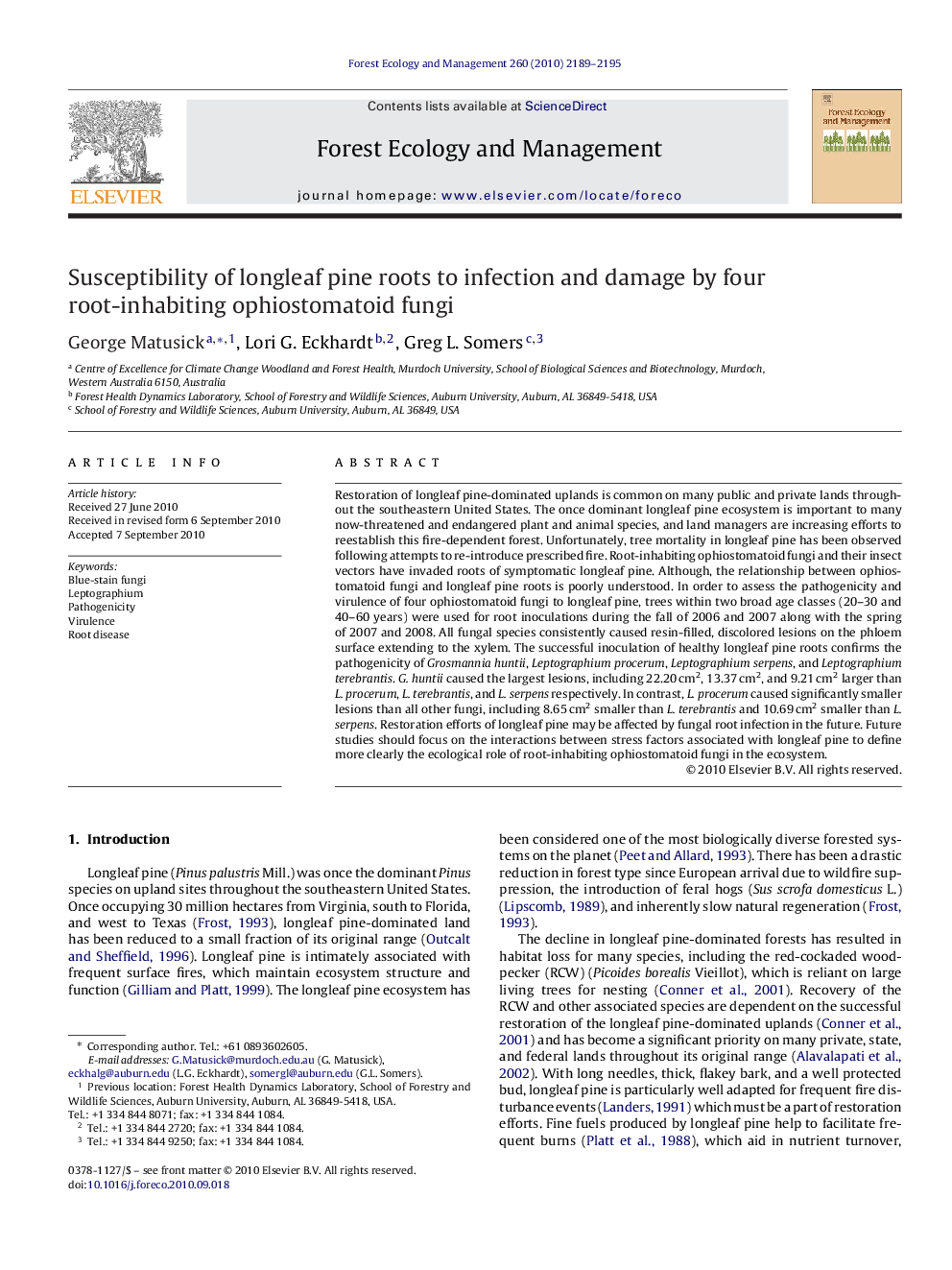| کد مقاله | کد نشریه | سال انتشار | مقاله انگلیسی | نسخه تمام متن |
|---|---|---|---|---|
| 87790 | 159266 | 2010 | 7 صفحه PDF | دانلود رایگان |

Restoration of longleaf pine-dominated uplands is common on many public and private lands throughout the southeastern United States. The once dominant longleaf pine ecosystem is important to many now-threatened and endangered plant and animal species, and land managers are increasing efforts to reestablish this fire-dependent forest. Unfortunately, tree mortality in longleaf pine has been observed following attempts to re-introduce prescribed fire. Root-inhabiting ophiostomatoid fungi and their insect vectors have invaded roots of symptomatic longleaf pine. Although, the relationship between ophiostomatoid fungi and longleaf pine roots is poorly understood. In order to assess the pathogenicity and virulence of four ophiostomatoid fungi to longleaf pine, trees within two broad age classes (20–30 and 40–60 years) were used for root inoculations during the fall of 2006 and 2007 along with the spring of 2007 and 2008. All fungal species consistently caused resin-filled, discolored lesions on the phloem surface extending to the xylem. The successful inoculation of healthy longleaf pine roots confirms the pathogenicity of Grosmannia huntii, Leptographium procerum, Leptographium serpens, and Leptographium terebrantis. G. huntii caused the largest lesions, including 22.20 cm2, 13.37 cm2, and 9.21 cm2 larger than L. procerum, L. terebrantis, and L. serpens respectively. In contrast, L. procerum caused significantly smaller lesions than all other fungi, including 8.65 cm2 smaller than L. terebrantis and 10.69 cm2 smaller than L. serpens. Restoration efforts of longleaf pine may be affected by fungal root infection in the future. Future studies should focus on the interactions between stress factors associated with longleaf pine to define more clearly the ecological role of root-inhabiting ophiostomatoid fungi in the ecosystem.
Research highlights▶ Ophiostomatoid fungi infected pine roots and induced larger lesions than controls. ▶ Grosmannia huntii caused larger lesions than those caused by all other fungi tested. ▶ Leptographium procerum was the least virulent fungus tested in longleaf pine roots. ▶ Lesions were larger following inoculation in the spring compared to those in the fall.
Journal: Forest Ecology and Management - Volume 260, Issue 12, 15 December 2010, Pages 2189–2195